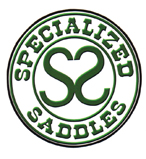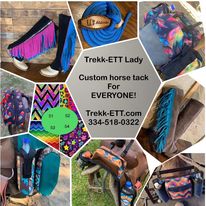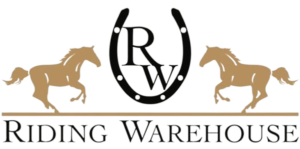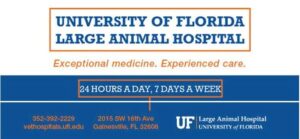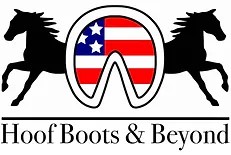Every time Linda Jones rode one of her Saddlebred horses, she was accompanied by pain from a knee injury she had been ignoring since her college days. Even so, Jones didn’t address the injury until the pain became so severe that it interfered with her performance in the show-ring.
“I had a torn patellar tendon from a fall I’d taken in college, and I didn’t think it had anything to do with my performance with my horses,” Jones recalls. “But during a halter class, I was running in the ring with my Saddlebred yearling and I blew my knee out.”
Tearing the patellar tendon that works with the muscles at the front of the thigh is a fairly common injury among equestrians, especially those aged 40 and older. Jones’ solution was to consult with a physical therapist four times a week for treatment. Her hope was to avoid surgery or even knee replacement for as long as possible.
“I was always exercising, but I wasn’t building the muscles necessary to support my knee,” says Jones. “My physical therapist had me walking uphill on an elliptical machine to strengthen my knee, and doing exercises to stretch my Achilles tendon in order to keep my heels down when I ride.”
According to pain specialist Naomi Betesh, M.D., Jones’ story is not unusual. Most equestrians will ignore an injury indefinitely just to stay in the saddle. But over the long term, remaining inattentive to it is not the best thing for riders.
“The first thing riders want to know is, ‘How soon can I get back in the saddle?’” says Betesh, an equestrian who was in her 40s when she went back to the sport after a long break. “But in the long run, some riders may find that they have more of an injury than they should have because we equestrians don’t stop for pain.”
Avoiding Pain
According to Betesh, many riders continue in the sport well into their 60s or 70s. But as people age, some become more susceptible to chronic conditions, including degenerative diseases such as arthritis, sacroiliac dysfunction, herniated discs, and rotator cuff and other repetitive motion conditions. Older riders are also more at risk of incurring overuse injuries such as lower back pain, as well as pain and injury to the shoulders and cervical spine.
Betesh says the key to keeping pain and injury at bay is avoiding injury altogether. For her, taking a multidisciplinary approach is critical. And that means working with a range of specialists to design a regimen that’s right for her patients who ride.
Exercises for Equestrians
While Betesh combines pain management with physical therapy and other treatments, Teresa Tapp has been creating low-impact exercise routines for equestrians and others for the past 30 years (learn more here). She believes a strong mind-body connection is necessary to achieve success in the saddle while avoiding injury.
“If your tailbone is tucked, your ribs are up and your knees are out, you are in a better position to react if your horse spooks,” says Tapp, who is also an equestrian. “But you have to be thinking about it.”
All T-Tapp exercises are designed to maximize muscle activation, circulation and lymphatic health while building better brain-body connection. This connection and core (abdominal) muscle strength is key to having success in the saddle.
One of the primary principles within all of Tapp’s no-impact aerobic exercises calls for standing with your feet separated by about a hand-span. This, she says, helps engage more core muscles. She then calls for the tailbone to be tucked and the knees to be bent and out towards little toe to create full fiber activation of all muscles that attach from lower back to hip, hip to knee and knee to ankle. “This stance strengthens your back and helps your legs build lean muscles with strength and density, not bulk,” says Tapp.
Each of Tapp’s exercises is designed to build and strengthen the connection between a rider’s mind and body. But she emphasizes that each rider must do the work in order to build strength. “You have to rebuild the weak or injured muscle from the inside out,” says Tapp. “Everything centers on the spine, and your spine is the pipeline for transmitting all mind-to-muscle communication.”
Click here to watch a video demonstrating some of these exercises.
The Right Support
For chiropractic physician Mark D’Amato, D.C., who treats both the horses and riders of the Sarasota, Fla., polo team, building muscle starts with identifying which muscles need building. “Everyone should be evaluated to find out which muscles need work in order to support the spine,” he says.
D’Amato also believes that good posture is key, not only to building the back and core muscles, but also to staying solid in the saddle.
“Most people think of posture only when they are standing,” D’Amato says. “But people, especially equestrians, should realize that good posture is important when they are sitting, as well.”
To help riders cultivate good posture, D’Amato believes they can benefit from using braces to support the back and knees while riding, gel-filled pads to provide cushioning in the saddle, and stirrups made with built-in wedges to help riders keep their heels down and take pressure off the knees. “These devices tell the muscles what to do until the muscles do it themselves,” he explains.
Betesh isn’t sure devices ultimately help riders. “Anytime you use a device, you run the risk that the muscle is going to stop doing what it’s supposed to do,” she points out. “It’s better in the long run to keep the muscle working.”
No matter what tactic riders use to avoid injury and improve performance, Betesh believes that at the very least, they should stretch before every ride.
Meanwhile, the combination of frequent exercise and professional advice has been beneficial for Jones. “I’m exercising the way I need to in order to keep my muscles strong, and I’m riding at least five times a week,” she says. “And because I’m not worried about hurting myself, I’m a much better rider.”
Groundwork
Most riders want to stay in the saddle, and that means remaining fit and injury-free, says pain specialist Naomi Betesh, M.D. But not all equestrians do what it takes on the ground to keep injuries at bay or prevent chronic pain from taking the joy out of riding.
“Riders don’t think much about what they do when they are not actually on the horse,” says Betesh, who offers these tips for equestrians to practice before they swing into the saddle.
-
- Take your time. Riders are often in a big hurry to get into the ring or out on the trail. But Betesh says haste can aggravate old injuries and create new ones. Pay attention to the way you prepare your horse for a ride by allotting enough time for grooming and tacking up. Lift saddles and equipment with care. Whenever possible, avoid unnecessary bending and lifting by placing saddles, pads and other equipment on stands, or otherwise off the ground.
- Step it up. Routine activities such as grooming and tacking up can also aggravate chronic injuries and cause new ones to the back, shoulders and neck, Betesh says.
You can avoid these injuries by using a stool when necessary to put yourself in a better position for grooming or tacking up. A mounting block will do the trick.
- Mount mindfully. As riders age, it gets tougher for even the most experienced equestrians to propel themselves up into the saddle. And those who pull themselves up from the ground risk injury to their back, neck and rotator cuffs, Betesh says. She recommends using a mounting block whenever you swing into the saddle. “Using a mounting block also causes less stress on a horse’s back,” adds Betesh.
Mounting blocks are widely available in two- and three-step versions. One that trail riders can attach to their saddle is available as well. You can even get a boost from easy-mount or “drop-stirrups” if you need to re-mount when you’re on the trail away from your mounting block.
PATRICE D. BUCCIARELLI is a freelance writer based in Florida.
This article originally appeared in the March 2014 issue of Horse Illustrated. Click here to subscribe.


